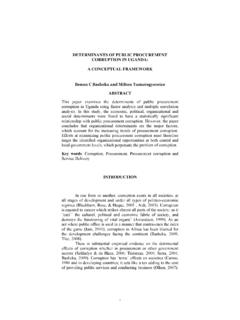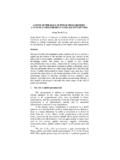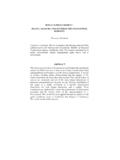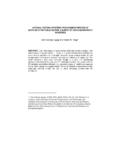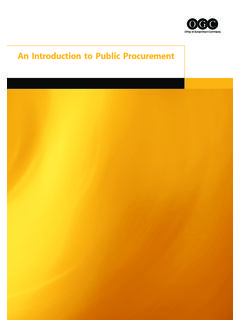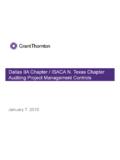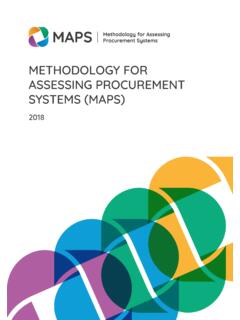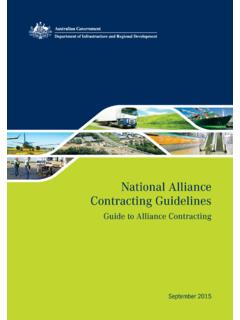Transcription of PROCUREMENT GOVERNANCE FRAMEWORK: SUCCESS TO …
1 PROCUREMENT GOVERNANCE framework : SUCCESS TO E-GOVERNMENT PROCUREMENT (E-GP) SYSTEM IMPLEMENTATION Rajesh Kumar Shakya* ABSTRACT. The purpose of the PROCUREMENT GOVERNANCE framework is to drive behavior towards achieving the PROCUREMENT objectives of the government. The PROCUREMENT GOVERNANCE framework defines and allocates accountabilities, communications, standards and major practices, and institutional responsibilities for public PROCUREMENT . e-GP system designed and implemented in line with the framework complements attaining the expected outcomes. This paper intends to study and outline the components of PROCUREMENT GOVERNANCE framework , and discuss the design and implementation aspects of e-GP Systems for its SUCCESS through seamless integration with the PROCUREMENT GOVERNANCE framework .
2 * Rajesh Kumar Shakya is the Candidate of the School of Public Service Leadership, Capella University, USA, and holds the Master s degree in Computer Engineering. Mr. Shakya s research interests are in the domains of policy and technology design, adoption, implementation, and performance measurement of e-Government, e-Government PROCUREMENT (e-GP), results-based public PROCUREMENT , and ICT interventions for the public service reforms. Mr. Shakya has been working as the specialist in different e-government, e- PROCUREMENT , ICT, MIS, business process reengineering, public PROCUREMENT and the Development Program Evaluations under the projects funded by the World Bank, ADB, OECS, the Commonwealth, other development agencies and governments in Asia, Central Asia, Africa, the Caribbean, and the Eastern Europe.
3 PROCUREMENT GOVERNANCE framework 563 INTRODUCTION The management information required to ensure that public PROCUREMENT is efficient and productive in converting budgets into results is central to the planning, monitoring and management of the modern State. These information requirements cannot expect to be delivered within a paper environment. In reality, the PROCUREMENT paper environment is unable to adequately deliver almost any of these requirements. According to Malta, Schapper, Calvo-Gonzale, and Berroa (2011) today s public PROCUREMENT environment is quite different from that of even just a few decades ago.
4 Modern governments are now complex service organisations and major economic players. PROCUREMENT has shifted to being more focused on complex infrastructure and services, often involving complete service solutions, high risk and high value, with just-in-time supply lines, and requiring high level skills required for the preparation of specifications, market research, financing and contract management. Problems inherent in traditional paper-based PROCUREMENT processes include, in addition to a lack of management information, inefficient procedures, high compliance costs for suppliers and departments, simplistic and ineffective PROCUREMENT methodologies, and a profound lack of transparency.
5 Governments around the world are taking the introduction of e-Government PROCUREMENT (e-GP) System as the solution to tackle with the complexities of today s PROCUREMENT requirements of the governments, which is turn is taken as the magic tool for transparency, equal treatment, value for money, and modern intervention for the good GOVERNANCE in the public PROCUREMENT sector. It is found that such implementations of e-GP are initiated either solely as the IT project for automation of few of the PROCUREMENT processes, or taken as part of the reform projects focusing on the compliance requirements of the existing manual PROCUREMENT laws.
6 E-GP implementations should be based on the core principles of PROCUREMENT , and built around the PROCUREMENT GOVERNANCE framework which provides a clear blue print of PROCUREMENT guidance for its design and implementation. Shakya 564 The PROCUREMENT GOVERNANCE framework defines and allocates accountabilities, communications, standards and major practices, and institutional responsibilities for public PROCUREMENT . e-GP system designed and implemented in-line with the framework complements attaining the expected outcomes. The PROCUREMENT GOVERNANCE framework and its importance for the successful implementation of e-Government PROCUREMENT (e-GP) will be discussed in this paper.
7 BACKGROUND GOVERNANCE has become a frequent concepts used in different field and it is not a new concept. governments spend a combined seven trillion dollars, Canadian governments 360 billion dollars and governments over 500 billion pounds. Consistent and professional PROCUREMENT practices across governments can positively impact the effective expenditure of public funds (Principles and Practices of Public PROCUREMENT , 2012). As political leaders draw increasing scrutiny and voter pressure to demonstrate fiscal responsibility, public PROCUREMENT sector must ensure the good GOVERNANCE for the best value of tax money.
8 Result-driven PROCUREMENT management is an increasing concern of all governments. E-Government PROCUREMENT (e-GP) backed by well-articulated PROCUREMENT GOVERNANCE framework help address the effective public expenditure management. GOVERNANCE The word GOVERNANCE is associated with words like government, governing and control (Klakegg & Williams, 2009). Control here means being able to decide, define limitations or delegate authority. GOVERNANCE is a term that carries different meanings. Its rise to prominence stems from the difficulties of hierarchical coordination by firms or the state (Miller & Lessard, 2000).
9 The concept of GOVERNANCE has been used widely in different context and fields. The needs of accountability and transparency have initiated the idea of the term GOVERNANCE not only in the organization, corporate but to the individual project as well. Rhodes (1997) defined GOVERNANCE as a non-hierarchical form of steering, where state and nonstate actors participate in the formulation and implementation of public policy . This means that both accountability and transparency PROCUREMENT GOVERNANCE framework 565 should be implemented so that each stakeholder could participate in the formulation of the policies (Aliza, Stephen, & Bambang, 2011).
10 Given that this paper is focusing on one of the crucial public sector, the public PROCUREMENT , therefore it is good to understand GOVERNANCE from the definition by OECD. OECD (2005) described public GOVERNANCE as the formal and informal arrangements that determine how public decisions are made and how public actions are carried out, from the perspective of maintaining a country s constitutional values in the face if changing problems, actors and environments. Public or the citizens is the important stakeholders to the public sectors. The term GOVERNANCE has migrated to the center of an overlapping set of concepts deployed across a broad range of settings, from academic theories, to advocates for change, to practitioners (Ramesh & Fritzen, 2009).
